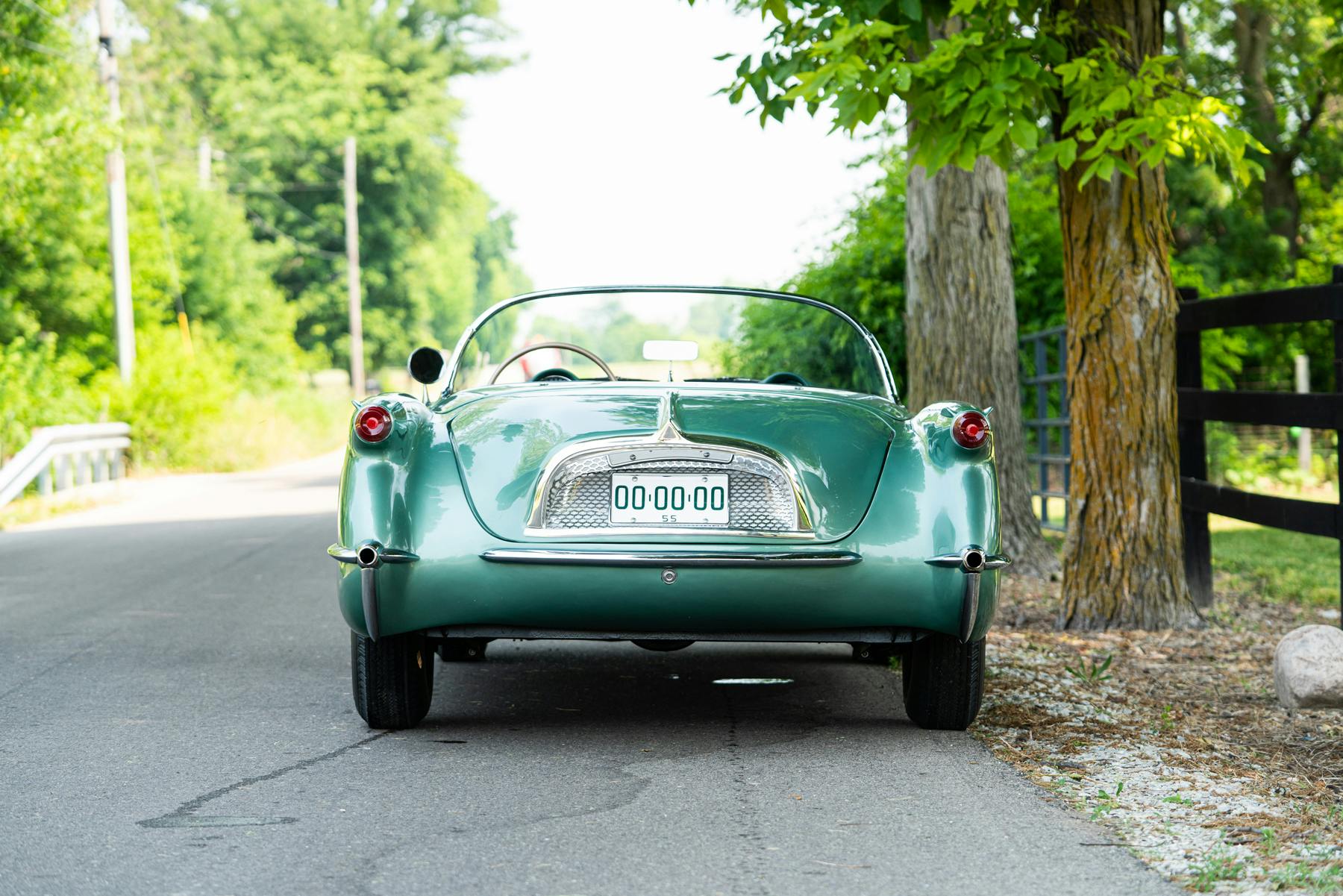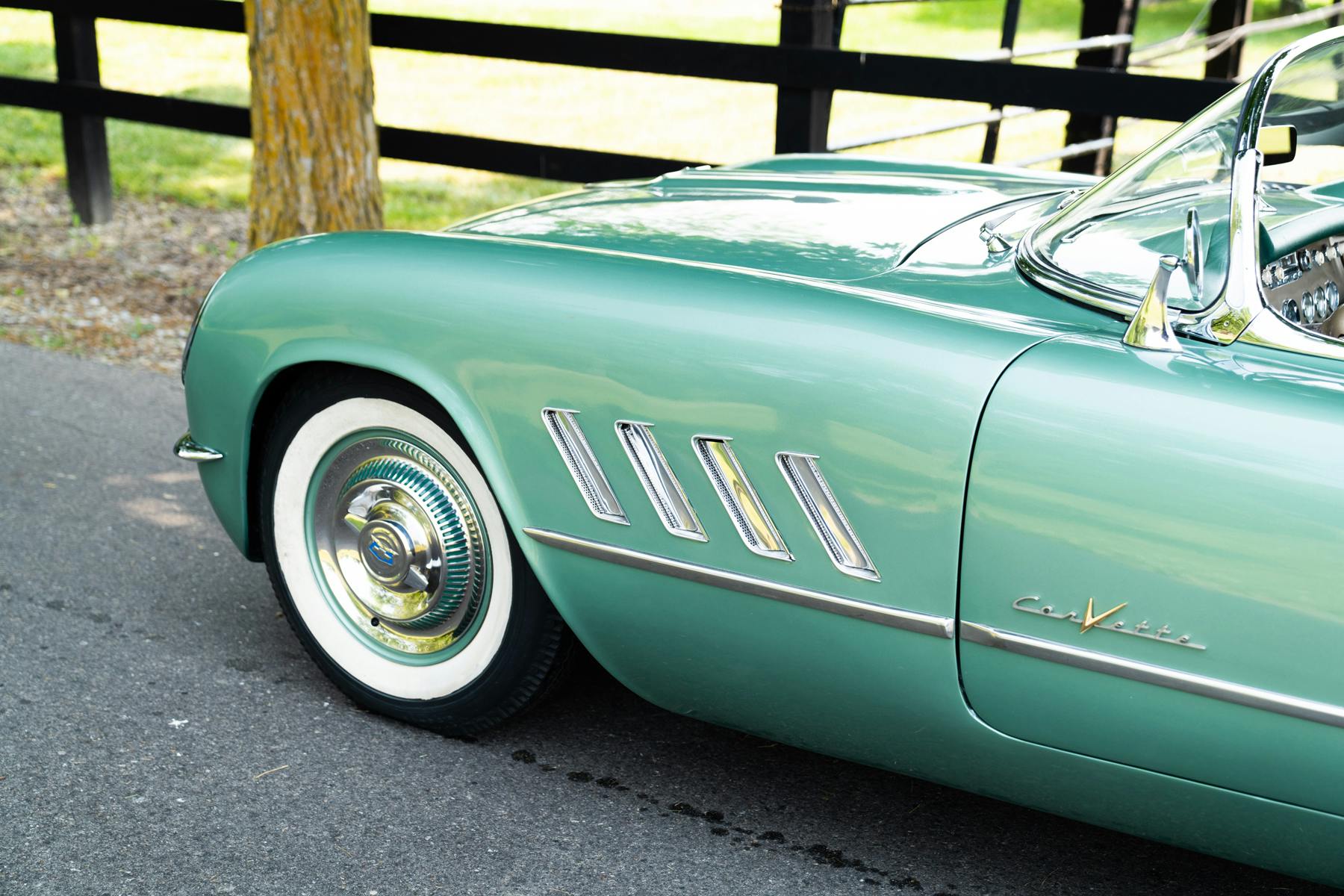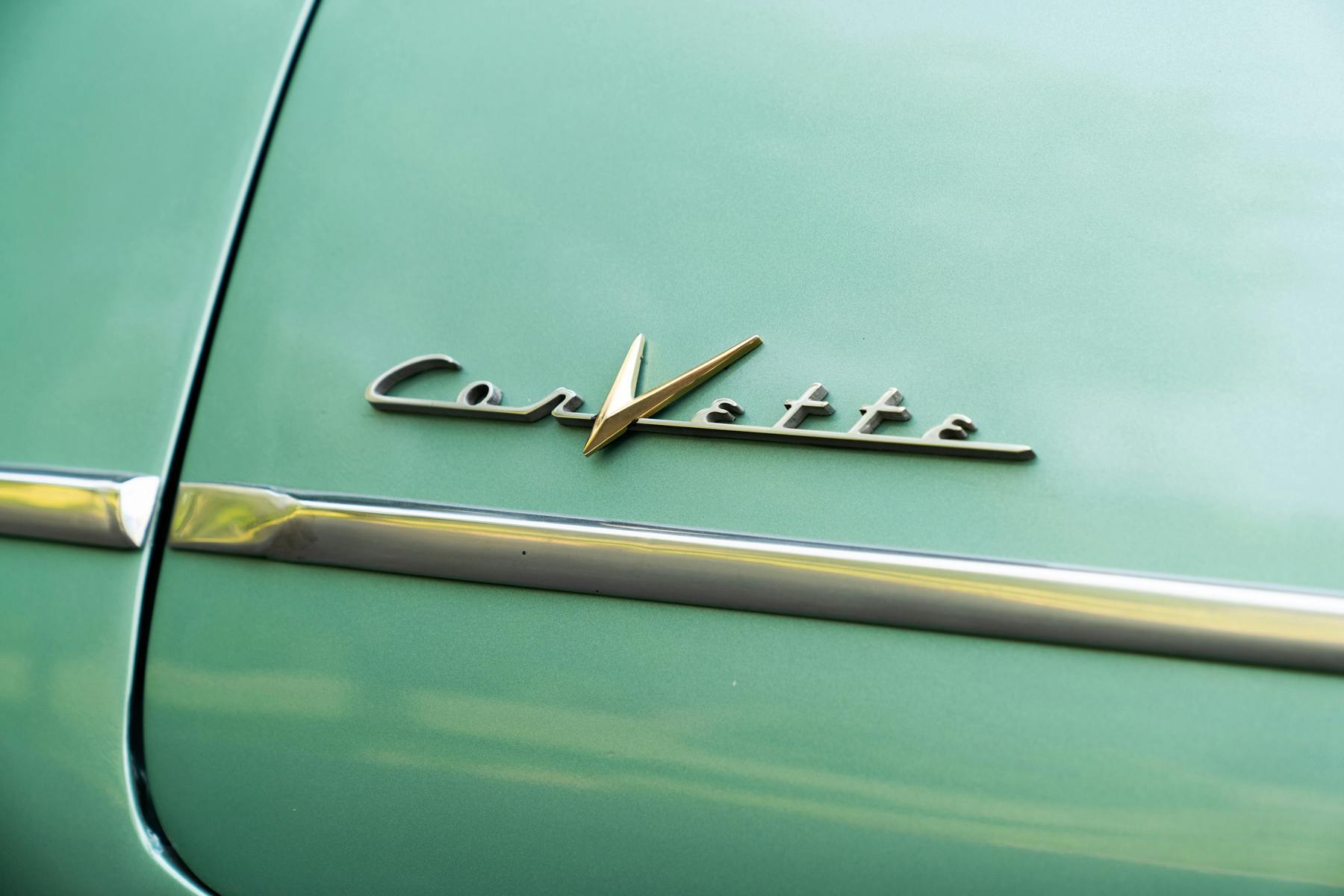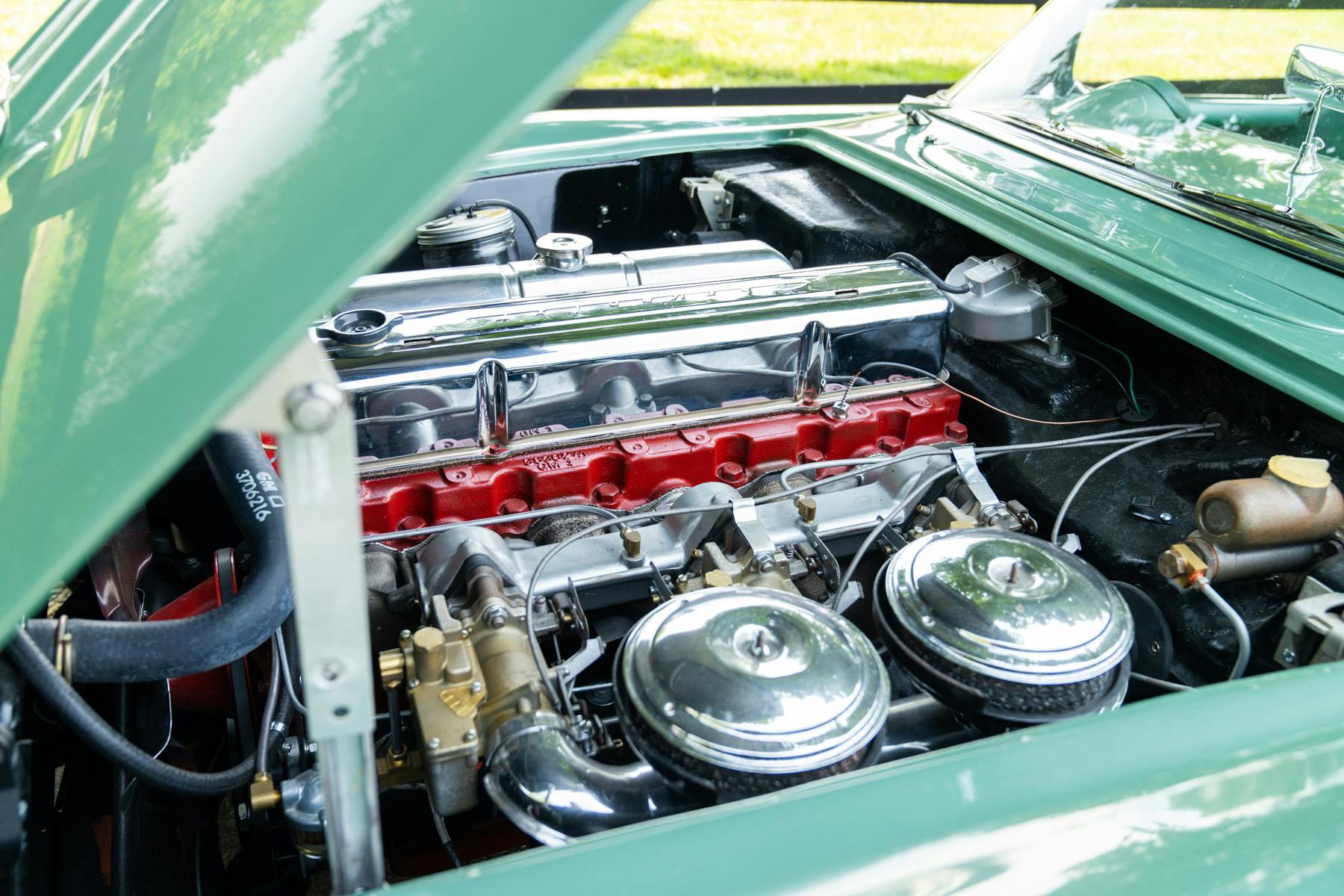1954 Corvette Prototype: A Euro-flair design that never was
Chevrolet built just 4640 Corvettes between 1953 and 1955, which makes each survivor of this initial “C1” design a special car in its own right. But perhaps none is quite as special as the 1954 Corvette prototype that will go under the hammer at Gooding & Company’s Pebble Beach auction on August 18 and 19. Because the mere fact this ‘Vette still exists at all is exceptional.
This car’s story goes back all the way to the very beginning of the Corvette program, prior to ’53, when GM built a batch of around 15 pre-production prototypes for experimental and display use. Largely hand-built, these vehicles were issued only a four-digit S.O. (“Shop Order”) code for internal use rather than a regular production-code number, as would have been used for a salable car.
Known initially as S.O. 2000, this particular Corvette prototype began life as a pale yellow hardtop model. It didn’t stay that way for long, though. Dismantled in early 1954, its body returned to GM’s design department where it received a new “S.O. 2151” code as well as a new chassis.

Most important in this context, the car got a fresh look. Under the watch of GM’s legendary design chief Harley Earl, this Corvette was transformed into a so-called “Proposal Car,” a prototype built for GM management to evaluate the styling changes intended for the Corvette’s 1955 model year. Given that the scope of this project was a simple facelift, likely meant to rekindle interest in the Corvette amid flagging sales, the car’s fundamental design and proportions didn’t change. Nevertheless, it’s an intriguing glimpse into Earl’s ideas for the Corvette’s evolution, highlighting a somewhat different design direction from the one he eventually chose for the model’s subsequent 1956 revamp.
In automobile design, the period between the end of World War II and 1960 was characterized by an intense creative exchange between the two sides of the Atlantic. On the one hand, to people in war-ravaged Europe, the triumphant U.S.A. represented a beacon of progress, the promise of a brighter future. In car design terms, this translated into European automakers’ wide adoption of design elements like wraparound glass and tailfins.
On the other hand, Detroit’s stylists sought inspiration from the Old World’s design heritage to lend a certain prestige and sophistication to their mass-market offerings. This Corvette prototype serves as an excellent case in point.
Design cues like the aggressive egg-crate grille, non-functional hood scoop, and slanted air outlets on the front fenders were all lifted straight from period Ferraris. Chevrolet’s curvaceous little roadster originated from Harley Earl’s desire to create an all-American answer to the growing success of European sports cars, so the look of this proposed facelift seems to further build on that original idea.
Interestingly, the decorative chrome trim pieces adorning the fender’s air outlets are only present on the left side of the car. The same goes with the Corvette script, which is also placed differently from left to right. A convenient way to evaluate different options using a single model, such asymmetrical prototypes are still a staple of every automaker’s design process.

The most notable styling change at the rear of S.O. 2151 is the trunk lid, whose shape is redolent of the ’54 Motorama’s fastback Corvair show car. The exhaust tips integrated into the rear bumperette’s design are another noteworthy feature, if only because they are the sole design element from this Corvette that made it onto the redesigned 1956 model.
General Motors ultimately decided not to change the Corvette’s appearance for the 1955 model year. With just 700 cars produced that year, the Corvette program was hanging by a thread and was ultimately, albeit indirectly, saved by the Ford Motor Company. As the Thunderbird outsold the Corvette more than 20 times over in ’55, GM reimagined the Corvette for 1956 with better weather protection, roll-up windows, and an overall glitzier appearance.

For GM or any other automaker, cars like S.O. 2151 are development tools. It may seem cold and shortsighted through a retrospective lens, but once such prototypes serve their purpose, their life expectancy can usually be measured in weeks. So, although we may never know exactly how this unique Corvette managed to escape destruction, let alone slip into private hands, it’s important to recognize its survival as an exceptional occurrence.
Following a painstaking restoration that took three years and brought this forgotten piece of Corvette history back to its appearance during its (fleeting) glory days of mid-1954, S.O. 2151 made its public debut at The Amelia in March this year.

Given the car’s unique status and significance, it comes as no surprise that Gooding & Company estimates it could fetch between $1.5M and $2M on the auction block, which means it could become the most expensive “C1” Corvette ever sold. That honor currently belongs to a 1962 Corvette “Gulf Oil” race car, which sold for $1.65M in 2015 at an RM Sotheby’s auction.
Although few people can afford to bid for the privilege of being this Corvette’s next custodian, those who saved, lovingly restored, and documented it all made a priceless contribution to the preservation of automobile history. That makes us all a little bit richer, no?
**
Matteo Licata received his degree in Transportation Design from Turin’s IED (Istituto Europeo di Design) in 2006. He worked as an automobile designer for about a decade, including a stint in the then-Fiat Group’s Turin design studio, during which his proposal for the interior of the 2010–20 Alfa Romeo Giulietta was selected for production. He next joined Changan’s European design studio in Turin and then EDAG in Barcelona, Spain. Licata currently teaches automobile design history to the Transportation Design bachelor students of IAAD (Istituto di Arte Applicata e Design) in Turin.
***
Check out the Hagerty Media homepage so you don’t miss a single story, or better yet, bookmark it. To get our best stories delivered right to your inbox, subscribe to our newsletters.




























Glad they continued to develop the styling into what became the production version. Only its mother could love this one.
I believe there was a documentary on this find and its subsequent restoration on Youtube. Amazing find.
I’ve never been a big Corvette fan except for those early C1s and the mid Sixties. This car is very interesting
and I did not know it existed.
In my early days I acquired an intake/exhaust manifold set off one of the 6 cylinder Corvettes. It was a 3-carb side draft with a dual exhaust manifold. I installed it on a 1952 Bel Air hardtop. I had to take a large hammer to the firewall for the rear carb to clear. I wonder why this example only had 2 carbs?
Another question I have of of its past: how and where were those 6K miles put on it?
I saw this Corvette at Amelia Island in March of this year! I knew it was a VERY special car. I spoke to the owner for quite some time-it was so much fun. He also knew of my podcast called CORVETTE TODAY, which is the ONLY current podcast dedicated to Corvette.
Yeah, Jim, I really like that, just not how it was used. Dash trim, instrument background would be killer, especially with contrasting paint. This use is an abomination.